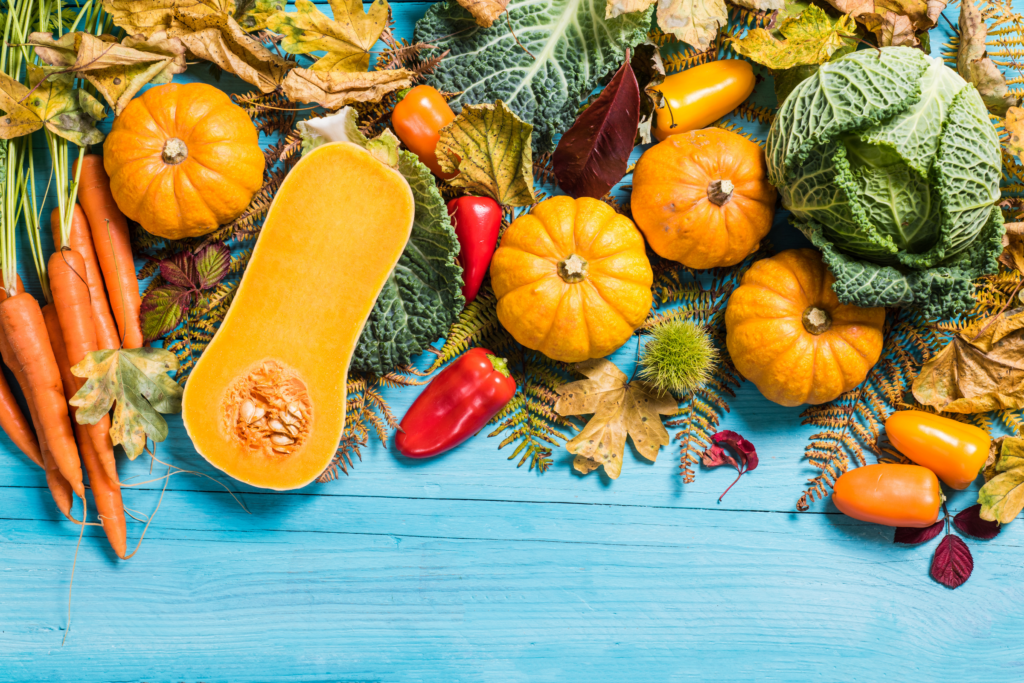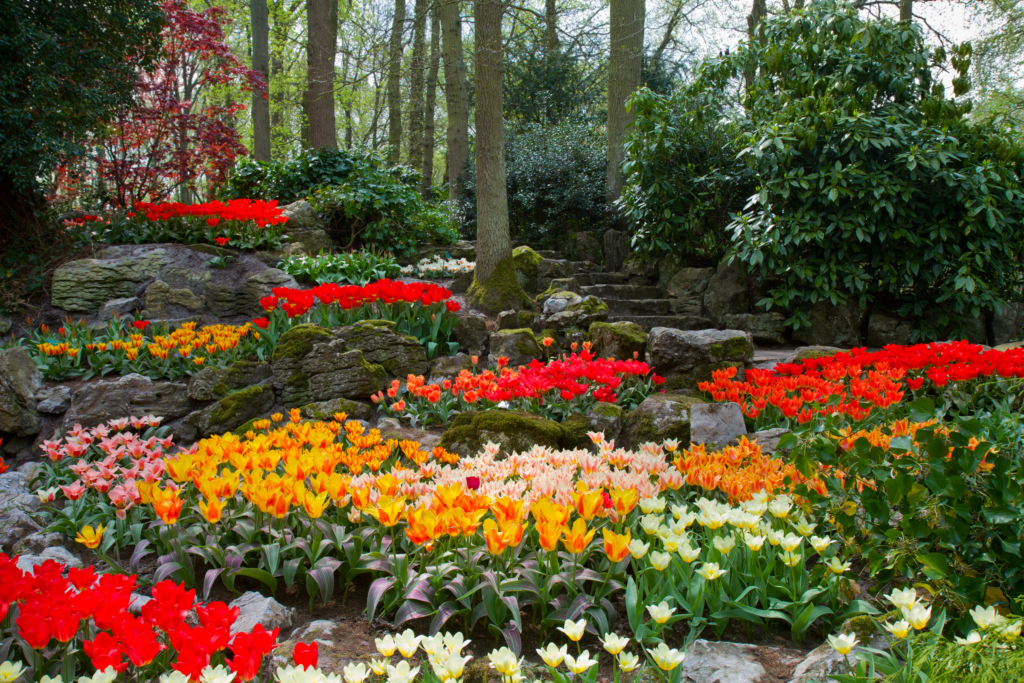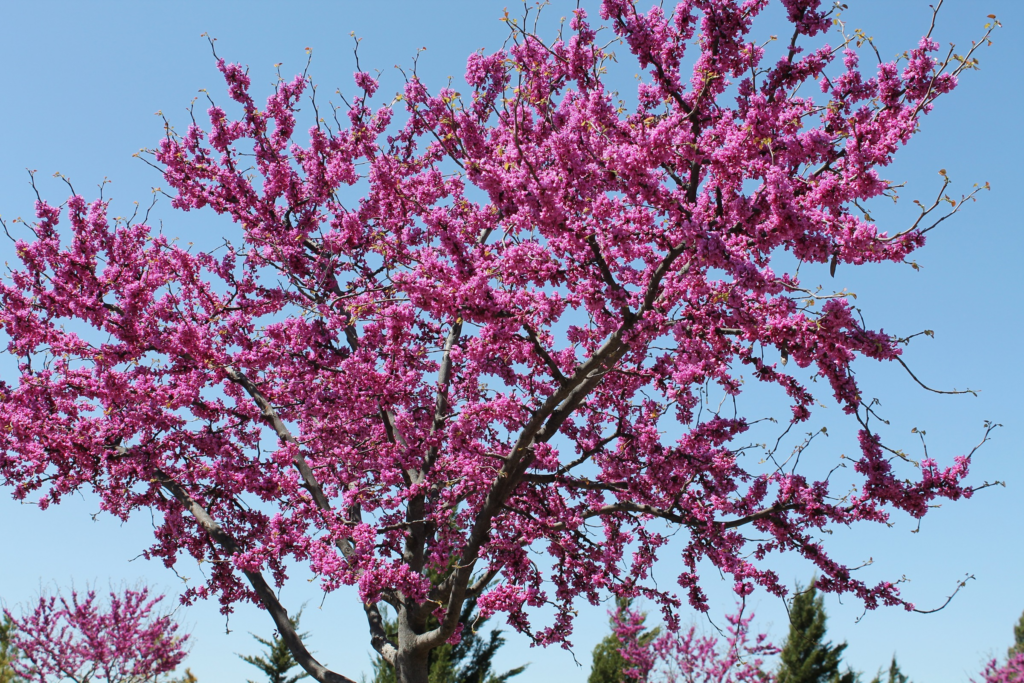The Ultimate Guide to Fall Gardening: Plant Now for a Stunning Spring Bloom
As you begin to feel the crisp autumn air and watch the leaves change color, it’s time to start thinking about your fall gardening tasks. One of the most rewarding aspects of fall gardening is planting bulbs and perennials that will bring your garden to life when spring arrives. In this ultimate guide to fall gardening, we will cover what to plant now for a vibrant and beautiful garden come springtime.
Fall is the perfect time to plant spring-blooming bulbs and perennials, as the still-warm soil allows plants to establish strong root systems before winter sets in. By doing so, you’ll be giving your garden an advantage when it comes to producing a stunning display of flowers next spring.
In this guide, we’ll help you choose which bulbs and perennials to plant, offer tips for planting and growing success, and outline which plants work best in certain climates. With careful planning and preparation, your garden will be a welcoming haven of vibrant colors and sweet fragrances when spring rolls around again.
Understanding the Magic of Fall Gardening
Fall gardening is a fantastic opportunity for gardeners to continue their love for planting even as summer comes to an end. The autumn season is an ideal time because the soil remains warm even though the air temperatures start to cool down. This combination creates a perfect environment for both plants and gardeners to enjoy.
During this time, you have the chance to plant various cool-season crops that will thrive during the colder months and bloom beautifully in spring. These plants often develop a sweeter taste as they mature in cooler weather, adding a unique touch to your garden.

Here are some benefits and tips for fall gardening:
- Soil: In autumn, the soil is generally warmer and holds moisture better, which provides ideal conditions for root development. This allows plants to establish themselves before winter and results in healthier, stronger plants come spring.
- Less Maintenance: As the temperatures drop, there are fewer pests and diseases to worry about. This means you can enjoy gardening without constantly battling with bugs and other problems that could harm your plants.
- Pleasant Weather: Cooler temperatures make working in the garden more comfortable for you, so you can stay outdoors longer and take your time tending to your plants.
To ensure success with your fall garden, consider planting cool-season crops such as:
- Leafy greens: kale, spinach, and Swiss chard
- Root vegetables: carrots, radishes, and beets
- Brassicas: broccoli, cauliflower, and Brussels sprouts
- Flowers: pansies, violas, and asters
Remember to keep an eye on the weather and protect your plants from frost by using frost covers or relocating potted plants indoors if necessary. With proper planning and care, your fall garden will reward you with vibrant colors and delicious produce throughout the season and into spring.
What is Spring Bloom and Why Plan it in Fall
A spring bloom is the period when plants, flowers, and trees awaken from their winter dormancy and transform your garden with vibrant colors and fresh scents. It’s natural to associate planting and gardening with the warmer months, yet fall is an essential time to prepare your garden to ensure a stunning and abundant spring bloom.
In fall, moderate weather with warm days and cool nights creates the perfect environment to establish new plants. Fall weather is generally more settled and tends to remain on the cooler, rainy side. This gives plants a chance to develop deep root systems without the stress of hot and dry spring days.

Spring-blooming bulbs, such as tulips and hyacinths, require a period of cold to bloom. Planting them in fall provides the necessary chilling they need, resulting in beautiful flowers come springtime. To plant spring bulbs in fall, follow these simple steps:
- Choose firm bulbs without soft or moldy spots.
- Dig a hole three times as deep as the bulb is tall (e.g., if the bulb is 3 inches tall, dig the hole 9 inches deep).
- Plant the bulb pointy end up in a site that gets full sun.
- Keep the soil moist but not soggy.
By planning and planting your spring bloom during the fall, you are also likely to encounter fewer pests, making it an easier task to maintain your plants.
Remember, fall gardening is the key to a beautiful and vibrant spring bloom. Take advantage of the cooler weather and prepare your garden to welcome a gorgeous display of life and color as winter transitions into spring.
Choosing the Right Plants for Spring Bloom
When planning your fall garden, it’s essential to select the right plants that will provide an impressive display of color in the spring. Here are some fantastic options for your consideration.
Perennials and Annuals: Plant some perennials, like hellebores, hostas, and astilbe, for reliable blooms every year. Add a mix of annuals to your garden too. Pansies and violas are great options as they can survive cooler temperatures.
Bulbs: To create a vibrant spring show, plant hardy bulbs in the fall. Choose from an array of bulbs such as:
- Tulips
- Daffodils (Narcissus)
- Grape hyacinths
- Crocuses
- Snowdrops
- Dwarf Irises
- Alliums
- Freesia
- Dahlias
These bulbs will provide a delightful spring display of color and fragrance in your garden.

Shrubs: Don’t forget about shrubs. They provide structure and can maintain visual interest even throughout the winter months. Some fall-planted shrubs to consider are:
- Redbud (Cercis canadensis)
- Chinese pistache
- Gingko
- Kale
Attracting Pollinators: To create a garden that supports pollinators, choose spring-blooming plants rich in nectar and pollen. Some options include:
- Daffodils
- Crocuses
- Snowdrops
- Alliums
In summary, by incorporating a mix of perennials, annuals, bulbs, and shrubs into your fall planting, you will enjoy a stunning display of colors and textures in your spring garden. Don’t forget to consider the needs of pollinators when choosing your plants, too. Happy gardening!
Preparation and Planting Guide
Understanding Your Garden’s Basics
Before you start planting, it’s essential to get familiar with your garden’s basics. Determine your USDA hardiness zone, which will guide you on suitable plants for your area.
Also, assess your garden beds’ soil quality by checking the pH, nutrients, and drainage. Amend the soil with compost or other organic matter if necessary. Keep in mind the amount of sunlight and water your specific plants will need and choose the best location in your yard accordingly.
Planting the Bulbs
Planting spring-blooming bulbs in fall is an excellent way to ensure a colorful and vibrant display of flowers when the weather warms up. Follow these steps to plant your bulbs for optimum root development and growth:
- Select healthy bulbs: Choose bulbs that are firm with no signs of disease, damage, or mold.
- Plan the layout: Arrange your bulbs with taller varieties in the back and shorter ones in the front. Consider incorporating different blooming times for a continuous display of color.
- Dig the holes: Dig holes two to three times deeper than the height of the bulb, spacing them according to the specific instructions for each type of bulb.
- Place the bulbs: Set the bulbs in the holes with the pointy end up and the root side down.
- Cover with soil: Gently fill the holes with soil, making sure not to damage the bulbs.
- Water the area: Give the freshly planted bulbs a good soak to encourage root growth.

Caring for Your Garden
Proper care for your garden in the fall will set the stage for a successful spring bloom. Here are some tips to ensure healthy root growth and plant development:
- Watering: Water your bulbs and other fall plantings consistently, but make sure not to overwater; soggy soil may lead to rot.
- Mulching: Apply a 2-3 inch layer of organic mulch around your plants. This will protect the roots from winter temperature fluctuations and help retain moisture.
- Removing debris: Clear your garden beds of any fallen leaves, weeds, and other plant debris to prevent diseases and pests from overwintering.
- Planting cover crops: Sow grass seed or a nitrogen-fixing cover crop, like clover, to enrich the soil, reduce erosion, and suppress weeds over winter.
By following these guidelines, you’ll be well on your way to creating a stunning spring garden, starting with your fall preparations.
Fall Gardening Tools and Resources
Having the right tools at your disposal is key to a successful fall garden. You’ll want to visit your local garden center or big-box store like Lowe’s to get started. Here’s a list of essential tools and resources to help you achieve a beautiful garden for spring blooming.
Gardening Tools:
- Trowel: For planting and transplanting small plants.
- Garden fork: Useful for turning soil, breaking up clumps, and aerating the ground.
- Pruning shears: To trim back plants, remove dead stems, and keep your plants healthy.
- Garden Hoe: For preparing your planting beds and controlling weeds.
- Garden rake: To level your planting area and gather leaves and other debris.
Resources for Choosing the Right Plants:
- Local garden centers: These are great for finding region-specific plants and expert advice on what will thrive in your area.
- Online resources: Websites and blogs dedicated to gardening can provide you with ideas, inspiration, and tips on seasonal planting.
- Planting calendars: These help you plan when to plant specific flowers for spring bloom, ensuring optimal timing and a beautiful display.
Ideal Fall Plants for Spring Blooming:
Visit your garden center or Lowe’s to find these beautiful fall plants that will give your garden a burst of color come spring:
- Lenten Rose (Helleborus): This evergreen perennial is perfect for adding an early pop of color to your garden.
- Daffodils: These springtime favorites are best planted in the fall to establish strong root systems for an impressive spring display.
- Tulips: With a vast array of colors and varieties available, tulips are a must for a vibrant spring garden.
- Crocuses: These hardy early bloomers can be planted in large groups for a stunning visual effect.
Remember to follow package instructions for planting depths and spacing. This will ensure that your garden has room for healthy growth and maximizes the visual impact of your chosen plants.
Dealing With Common Fall Gardening Challenges
As you prepare your garden for spring bloom, you may face several common challenges. Don’t worry, here’s how to tackle them effectively.
- Cold temperatures: Fall brings cooler weather that can be harsh on your plants. To protect them, use mulch to insulate the soil. It helps retain moisture and prevent frost damage. Choose organic materials like straw, leaves, or compost that break down and nourish the soil.
- Foliage and debris: It’s essential to clean up fallen leaves and debris from your garden regularly. If left to accumulate, they can harbor pests and diseases that cause problems for your plants next spring. Make a habit of raking and disposing of them properly.
- Deer and critters: These unwanted visitors can cause significant damage to your beautiful garden. A simple solution is to erect a barrier like chicken wire or fencing around your garden. Additionally, using deer-resistant plants like daffodils, lavender, and rosemary discourages them from feasting on your plants.
- Disease: Prevention is key when it comes to garden diseases. Rotate your crops, as planting the same type of plant in the same spot can increase the risk of disease. Also, choose disease-resistant plant varieties and maintain good airflow around your plants to prevent fungal infections.
- Pests: Insects are a common challenge in fall gardening. To minimize their impact, keep an eye out for signs of infestation. Regularly inspect your plants and promptly remove any pests you spot. You can also use natural pest control methods like beneficial insects (e.g., ladybugs) or organic insecticidal soaps, if needed.
Remember, being proactive and addressing these challenges early on will go a long way in keeping your garden healthy and productive, paving the way for a spectacular spring bloom.
Colorful Trees to Consider for Extra Autumn Appeal
Fall is a fantastic time to add some colorful trees to your garden that will not only provide vibrant autumn hues but also set the stage for beautiful blooms come spring. In this guide, we’ll introduce you to two particular trees that would make excellent additions: the Redbud tree and the Spectacular Cercis Canadensis.
The Redbud Tree
The Redbud tree (Cercis Canadensis) is a stunning choice for your fall garden, with its vibrant colors that transition from green in the summer to a mix of yellow, orange, and red in the autumn. This deciduous tree is also known for its lovely pinkish-purple flowers, which emerge in early spring, adding a burst of color to your landscape after a long winter.

When planting a Redbud tree, pick a spot with well-drained soil and partial to full sun exposure. It can grow to be about 20-30 feet tall with a similar spread, so give it plenty of space in your garden.
Some highlights of the Redbud tree include:
- Vibrant fall colors
- Beautiful spring blossoms
- Easy to maintain
- Suitable for Zones 4-9
The Spectacular Cercis Canadensis
Cercis Canadensis, also known as the Eastern Redbud, is a close relative of the standard Redbud tree. This spectacular variety features striking ruby-red leaves that deepen in color throughout the summer before exploding into an array of fiery red, orange, and even purple hues in the autumn.
In spring, you’ll enjoy its pink to purple flowers before the foliage emerges, creating a stunning contrast in your garden. The Spectacular Cercis Canadensis loves full sun or partial shade and well-drained soil. It can grow up to 30 feet tall and wide, similar to the classic Redbud tree.
Key aspects of the Spectacular Cercis Canadensis:
- Unique ruby-red foliage
- Fiery autumn colors
- Brilliant spring flowers
- Suitable for Zones 5-9
In conclusion, introducing these trees to your fall garden will surely add extra autumn appeal and bring a splash of color in the spring. Remember to consider your growing zone and the specific tree requirements when choosing the perfect spot in your garden. Happy planting!
Let Us Know How We’re Doing!
Did this expertly prepared resource answer your question?
Do you have another question about home maintenance, home improvement projects, home appliance repair, or something else?
Get more information, send in questions and keep the discussion going by contacting the I’ll Just Fix It Myself company customer service team at at 1-800-928-1490 or Email us at [email protected]
